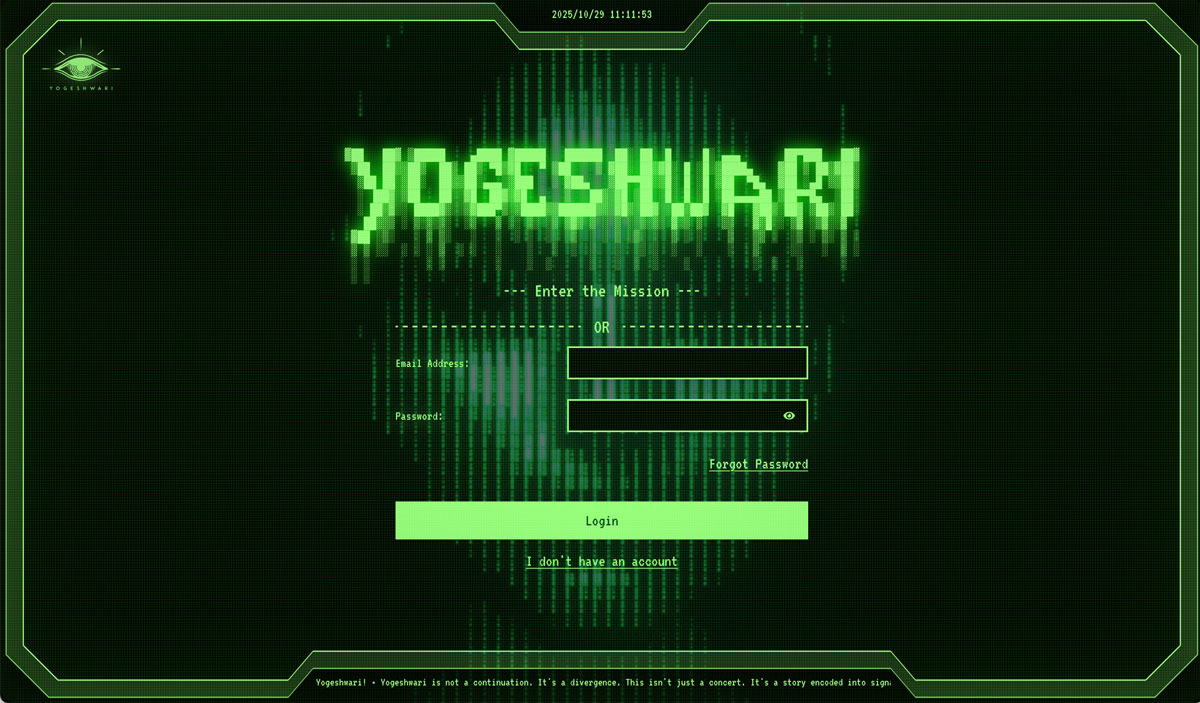
When is a concert announcement not just an announcement? When it’s a rabbit hole.
For the launch of his “Yogeshwari” concert, musician Charitha Attalage didn’t just buy billboards or run social media ads. He and his team orchestrated one of the most brilliant marketing campaigns Sri Lanka has seen: a complex, multi-layered Alternate Reality Game (ARG).
This wasn’t just marketing; it was an invitation for fans to become digital detectives. Here’s a breakdown of the strategic genius behind “Project Yogeshwari.”
The Strategy: From Passive Listeners to Active Agents
The core of the “Yogeshwari” campaign was to abandon traditional “push” advertising. Instead of telling the audience about the concert, the team dared them to find it.
The strategy was to build a fictional universe, an extension of Charitha’s “Kuweniverse” and let the audience discover the concert as the final “truth” at the end of a mystery. This is experiential marketing at its finest. It creates a level of engagement and emotional investment that a simple “Buy Tickets” button could never achieve.
The Fiction: Creating the Legend of “Y”
The campaign’s masterstroke was the creation of a fictional character: “Y,” or Yogeshwari.
Based on the clues, fans pieced together a story:
- Yogeshwari was a brilliant (believe it’s fictional) engineer from the University of Moratuwa.
- She had developed two secret projects: a physical stealth technology and, more importantly, a method for hiding data (images and text) inside audio files (a real technique called steganography).
- Her work was intended for a “resistance,” inspired by the “betrayed queen” Kuweni, a central theme in his music.
- This “Project Yogeshwari” was her legacy, and she left a trail of clues for “the right person” to find.
The campaign’s tagline, “For The Truth to be Remembered, Someone Must First Find it,” wasn’t just a slogan. It was a direct instruction.
The Execution: A Multi-Platform “Rabbit Hole”
The campaign was a masterclass in interactive storytelling, rolled out in deliberate phases:
- The Intrigue: It began subtly, with Charitha Attalage himself and his colleagues dropping cryptic posts and notes on their personal Facebook accounts. These posts were not ads; they were “leaked” fragments of Yogeshwari’s story.
- The Puzzle: These posts led fans to a series of digital puzzles. Fans weren’t just clicking links, they were decoding messages hidden in audio files (living up to the “listen with your eyes” clue), solving cryptic riddles, and exploring hidden corners of the internet.
- The Community: The campaign was intentionally too complex for one person to solve. This forced fans to collaborate on platforms like Whatsapp groups, Facebook groups etc, pooling their findings. They weren’t just consumers, they were a community of decoders working together. The campaign’s true slogan, “WE ARE ONE,” became the methodology.
The Success: Why It Was So Effective
The “Project Yogeshwari” campaign was a massive success long before the first ticket was sold.
- It Built Exclusivity: Fans who solved the puzzle felt a deep sense of accomplishment and ownership. They weren’t just attending a concert; they had unlocked it.
- It Generated “Earned Media”: The mystery itself became the story. YouTube channels, podcasts, and social media pages exploded with “explainer” content, with thousands of people watching others try to solve the puzzle. This was free, organic publicity that was far more powerful than any paid ad.
- It Shifted the Brand: This campaign cemented Charitha Attalage’s brand as something more than just music. He is the curator of a “universe,” a storyteller who blends art, history, and technology.
By the time the final clue was solved and the “Yogeshwari” concert was revealed, it wasn’t a new product being launched. It was the climax of a story that hundreds of people had lived through. That is a level of marketing a simple poster can never hope to achieve.
